Boiled Pork, Hmong Greens, and Persistence
Notes from a collaborative cooking session with chef Yia Vang and photographer Pao Houa Her
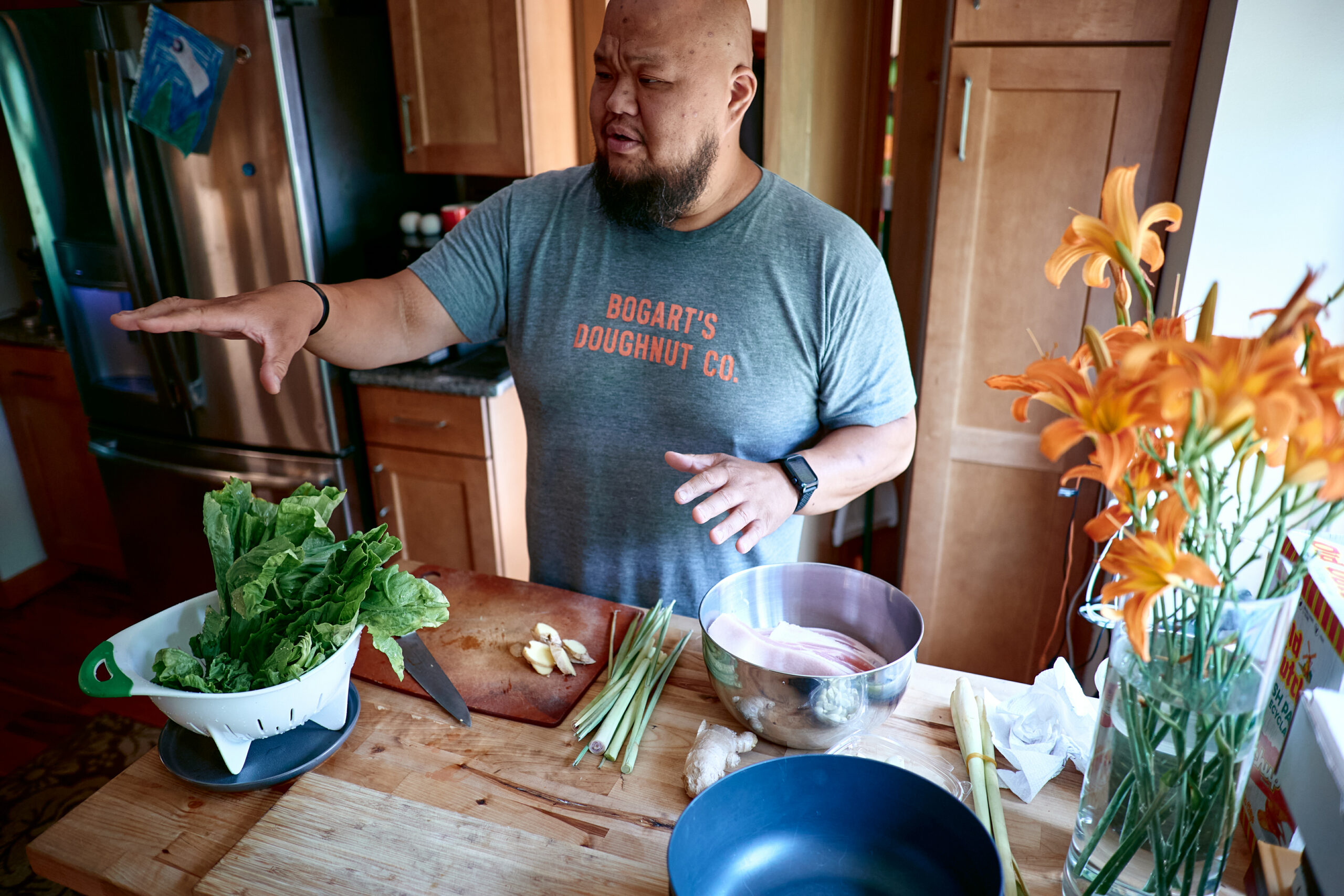
“Hmong parents don’t really say ‘I love you’ very much.”
Chef Yia Vang of Union Hmong Kitchen and his upcoming restaurant Vinai is telling me that the mustard greens are not in very good shape right now, and that’s a shame, he says, because it’s really the essence of the dish he’s cooking.
When I asked him and photographer Pao Houa Her—whose Walker Art Center solo exhibition Paj qaum ntuj / Flowers of the Sky opens on July 28, 2022—to cook a dish together, they said it was no question: it would have to be nqaj npuas hau nrug zaub ntsuab—boiled pork with Hmong greens.
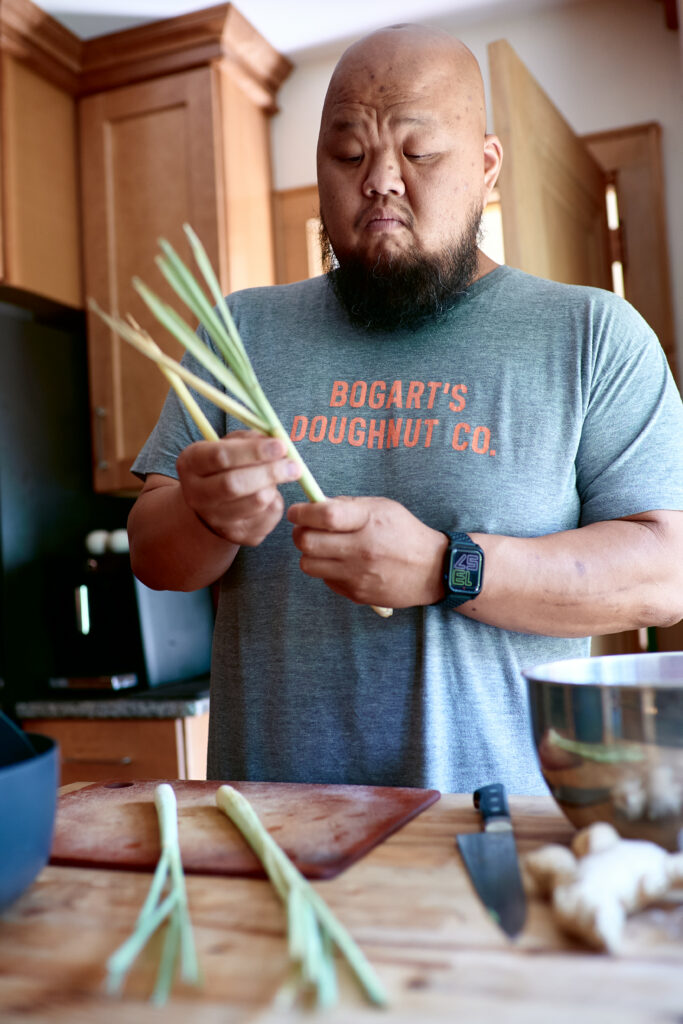
Photo: Uche Iroegbu. 
Photo: Uche Iroegbu. 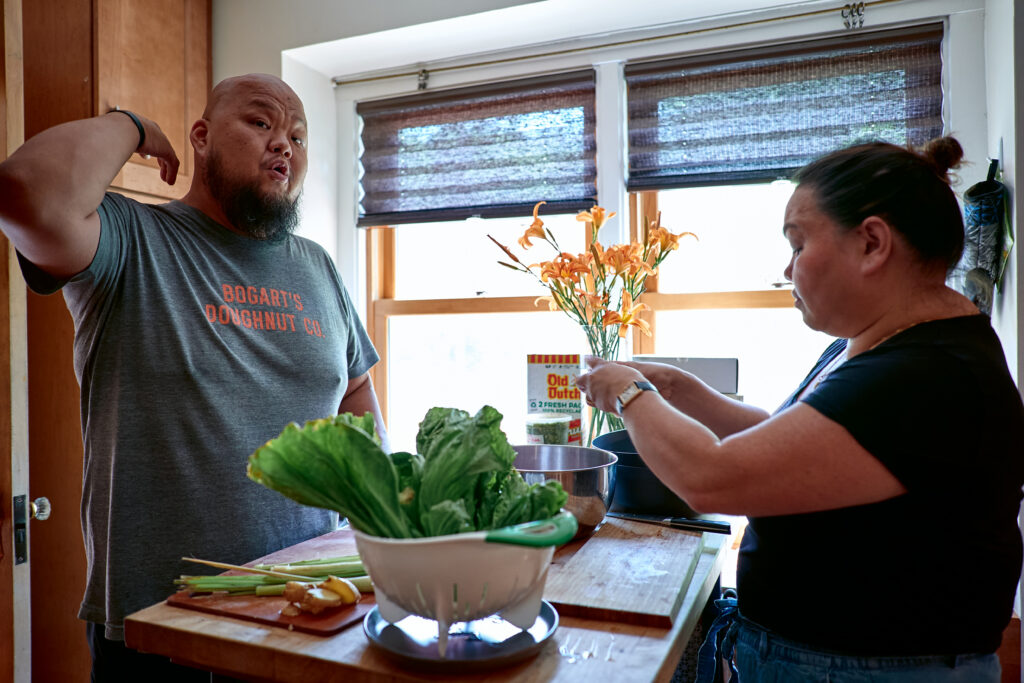
Photo: Uche Iroegbu. 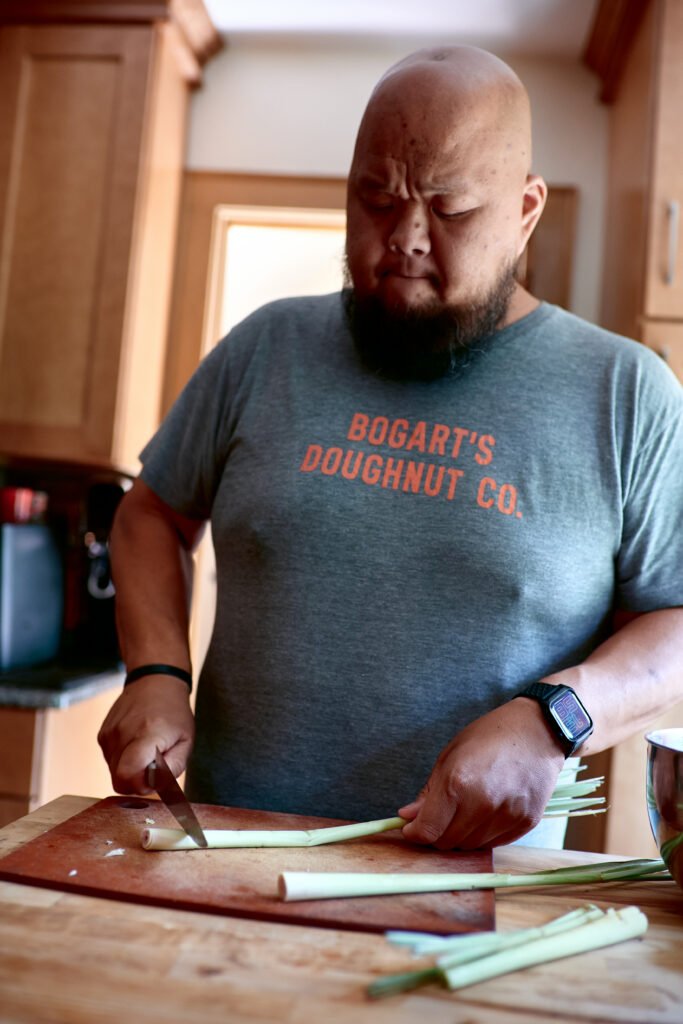
Photo: Uche Iroegbu. 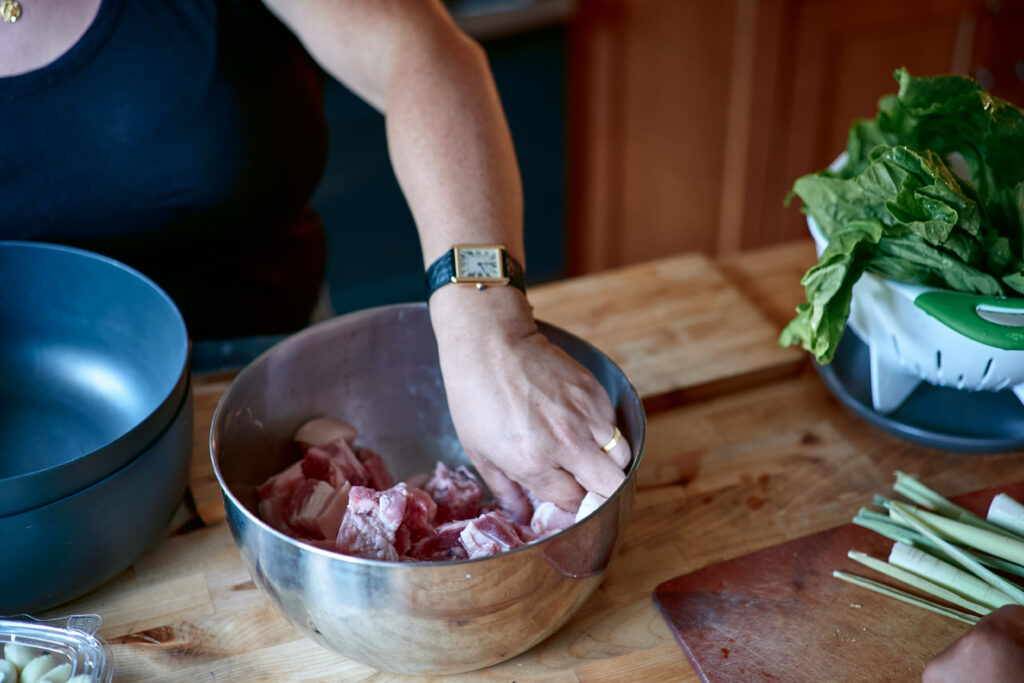
Photo: Uche Iroegbu.
“If I call my mom and say ‘Mom, I want to eat this,’ and the next time I go over and she hands me an ice cream bucket full of it, that’s her saying, ‘I love you,’ Pao says. In many ways, food is love in Hmong culture. Indigenous people who were ousted from their homeland of Laos, and forced to live nomadically, theirs is a culture of extreme survival, and having something to eat is never taken for granted.
“If I don’t finish my food, my parents would say, ‘I’ll cut open your stomach and put it in there,’ Yia says. For Pao, it was, “I’ll cut open your head and put it in there.”
Yia is well known for being something of a Hmong emissary, bridging the gap between Hmong and non-Hmong cultural awareness locally and beyond. His work has taken him to Netflix’s Iron Chef: Quest for the Iron Legend, PBS’s Relish, where he hosts his own show, as well as an upcoming cookbook and cable television show. Pao is a Yale-educated McKnight fellow, but both agree—their parents never let them forget where they came from.
“I don’t even know if my parents know what I do,” Pao says, leaning against the countertop as Yia picks the yellow leaves away from the greens.
“Our parents operate in survival mode at all times.” When she invited them to her opening, she says, they responded that they could come depending on what day and time of day. They first have to attend to their fields where they farm.

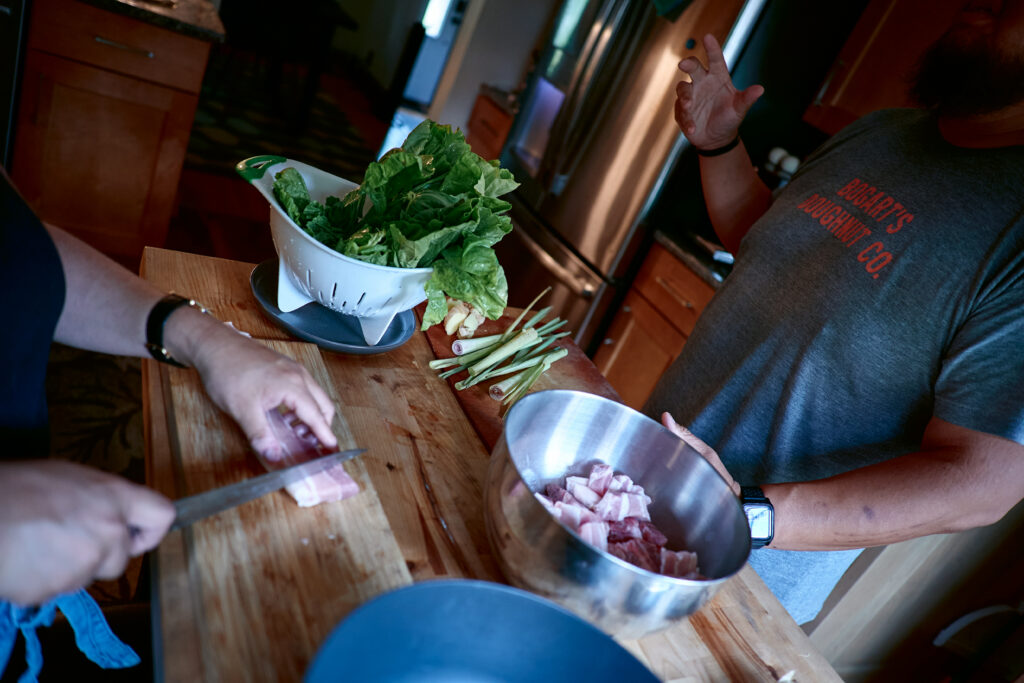
Yia adds the greens to the pot—the essence of the dish because the vegetable could traditionally be gathered wild, ensuring something to eat, regardless of what else may or may not be available. Sometimes the greens would be blanched, dried, or fermented, but they were always in abundance. Both say that the dish was always just there—for Yia’s family in an aluminum pot at the back of the stove, and for Pao, something her late husband would make almost nightly when she was too busy to cook.
“We always had a pig, rice, greens, and some kind of pepper,” Yia says, motioning to the Tiger Bite Sauce, a recipe that’s a specialty of his mother, and one that he refuses to make on his own, insisting that it would not be the same absent her hand. That pig would sometimes be slaughtered by Yia and his dad in their traditional manner—a fact that Yia remembers having to hide from his suburban American neighbors.
“My dad would always have to remind me to shut the garage door tightly so the neighbors wouldn’t see and maybe call the police or the Department of Health or something.”
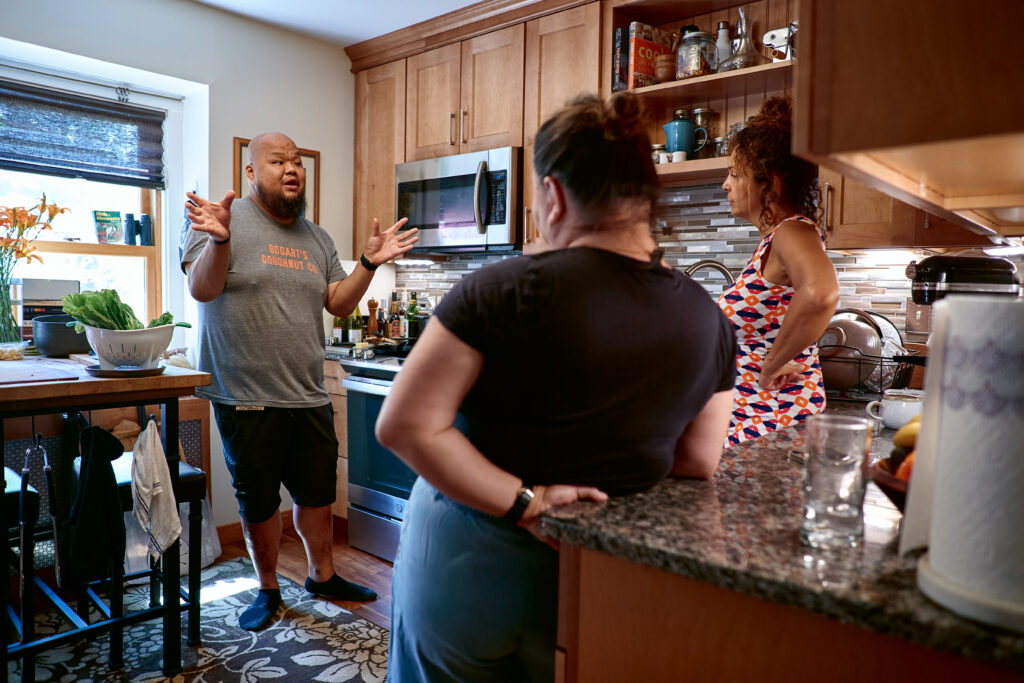
Standing in the kitchen with Yia and Pao is an exercise in better understanding Hmong culture—through the highly specific standpoint of their respect and reverence for their parents.
“Most people don’t understand why the Hmong are even here,” Pao explains, “that they helped the Americans fight the [Vietnam] war.”
By the time he was 31, Yia’s father had fought in the war, fled Laos, wound up in a refugee camp, married, had children, and made his way to America, where he has never stopped working. This is without mentioning the survival of countless atrocities, many of which Yia does not even know about—his parents have worked to keep their children buffered against the worst details of their many ordeals. But it was that realization, by the time he reached the same age, that Yia felt the need to create a love letter to his parents through his own hard work.
Both Yia and Pao coincide on this point—their parents are often too busy working at growing food for both sustenance and survival to always stop and notice the finer points of their highly accomplished kids. His recent James Beard nomination seemed to mostly flummox his parents, says Yia, as does Pao’s Walker opening with her own parents. This confusion is born out of love, they say. Highly attuned to what it takes to survive in a harsh world, both families just want their kids to be successful at pragmatic jobs like teaching—to ensure that they’ll be able to eat, and survive.
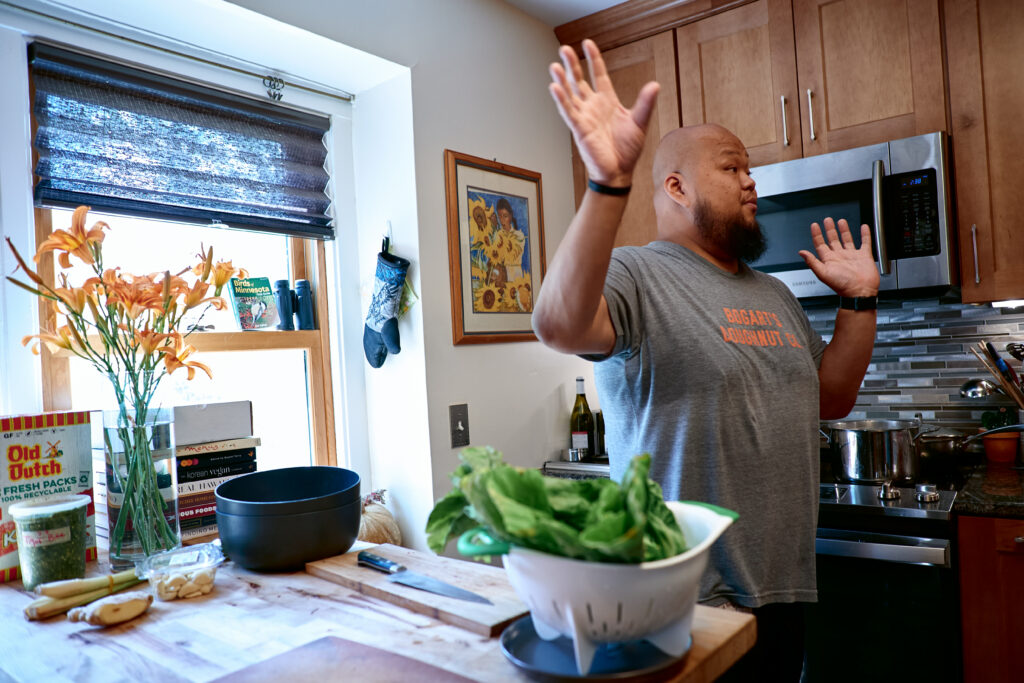
Photo: Uche Iroegbu. 
Photo: Uche Iroegbu. 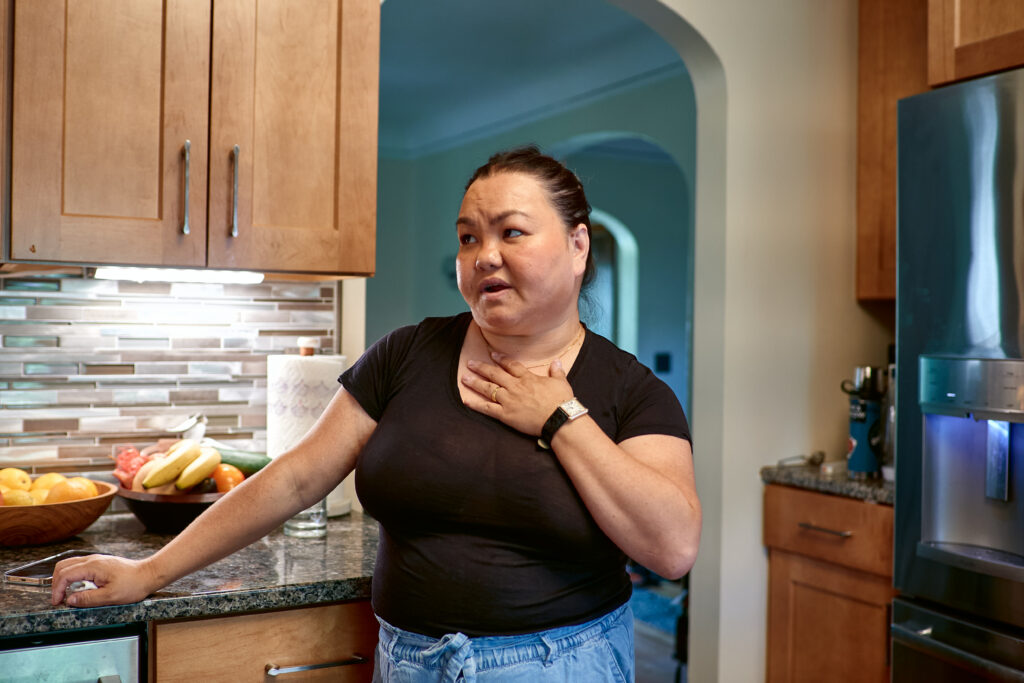
Photo: Uche Iroegbu. 
Photo: Uche Iroegbu. 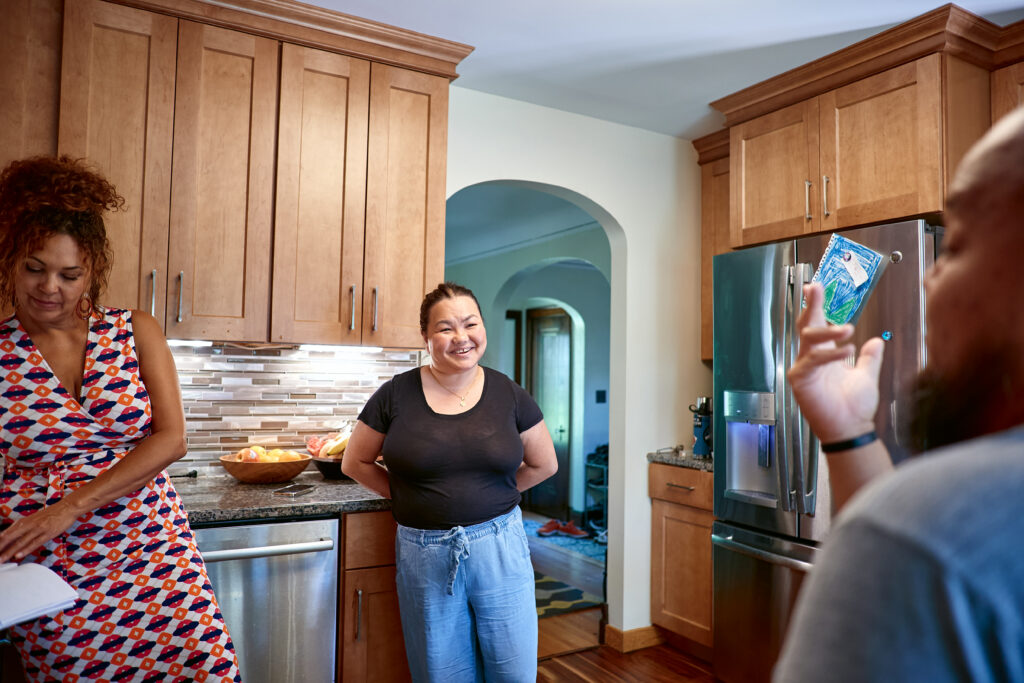
Photo: Uche Iroegbu. 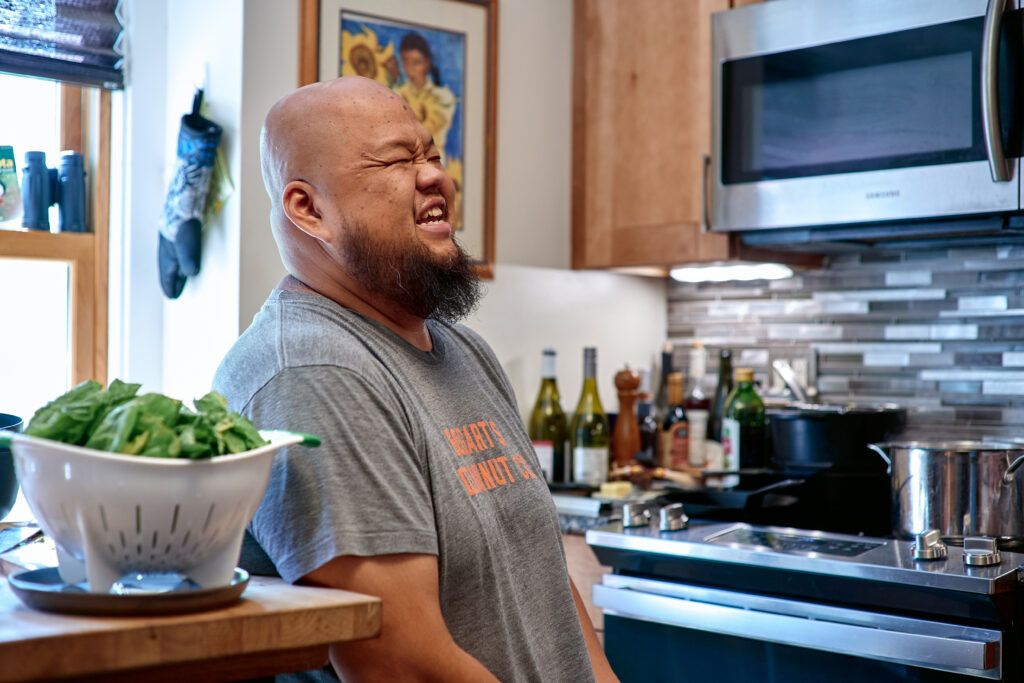
Photo: Uche Iroegbu. 
Photo: Uche Iroegbu.
Pao’s ascent was a winding one.
“I wasn’t always the best kid or the best student in high school,” she recalls. The only class she wouldn’t skip out on was photography, and she spent her lunch money on materials so that she could take pictures. Eventually, she came into contact with the work of renowned photographer Wing Young Huie, known for his intimate, public space portraits of traditionally marginalized people in their own communities, and her path became clearer. She wanted to make similarly intimate portraits of the Hmong community, something that reflected the culture back to themselves—and she makes clear that the upcoming Walker opening is tailored to a Hmong audience first.
“When I was a young photographer, I was told by a mentor that if I wanted to be a serious artist I couldn’t just shoot Hmong people. I thought, ‘Who better to shoot Hmong people?’ He was basically telling me that nobody cares about Hmong people.”
Her penetrating, personal portraiture of Hmong people living Hmong life pivoted due to the pandemic. Unable to be close to others, Pao turned to landscapes—but the intimacy of her work did not fall away. Her exhibition Paj qaum ntuj / Flowers of the Sky, a Hmong phrase alluding to growing marijuana, tells the story of Hmong farmers in Northern California, and their ongoing encounters with anti-Asian retaliation, criminal profiling, violent policing, and limited governmental protection. In other words, a Hmong story.
And yet, as the collection illustrates, they endure.
“My dad doesn’t speak English,” Yia tells us. “but he’s been very successful in his work because giving up is never an option. ‘We’ll figure out a way,’ is integral to our survival.”
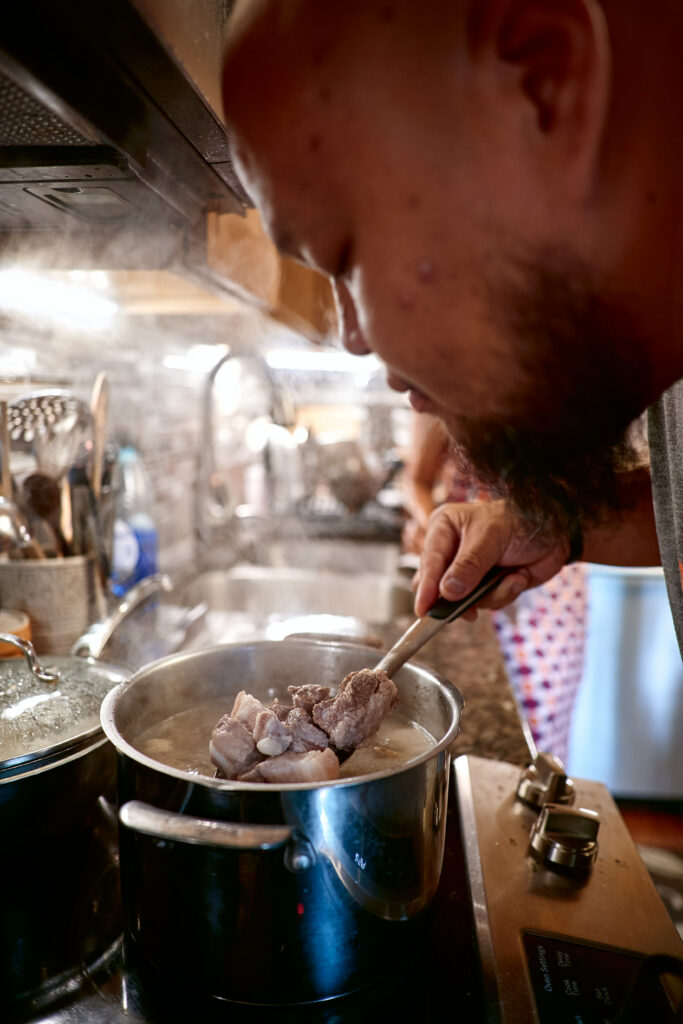
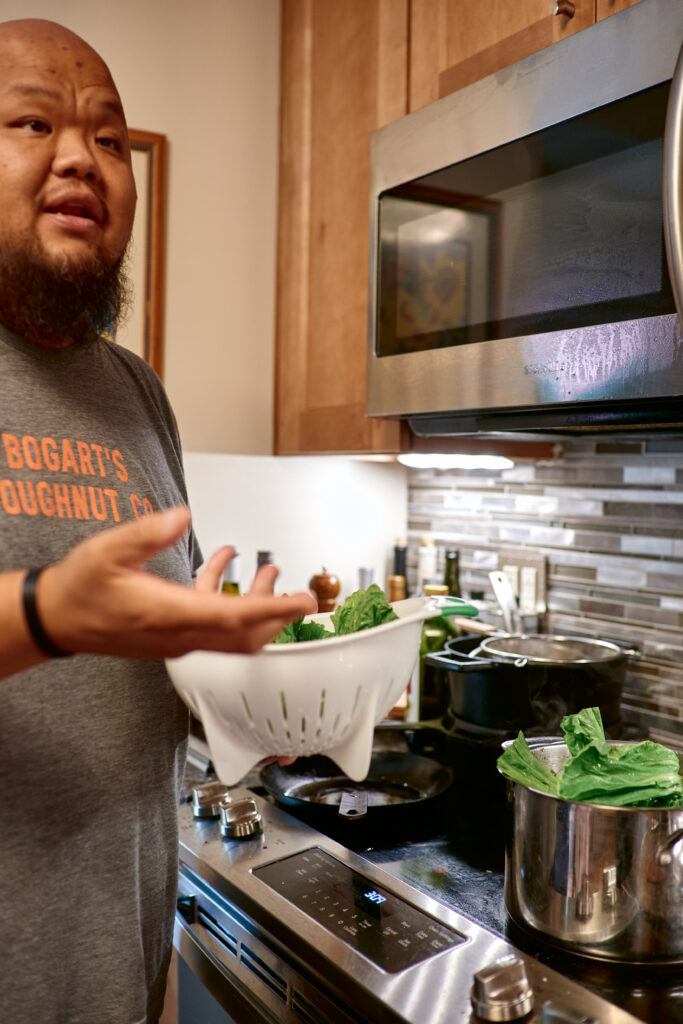
He stops to tell another story about the dish he’s preparing, and how his parents would tear the prime bits of pork from the bone and serve that to the children, while they themselves would simply eat the broth. It’s a gesture that guarantees that the bloodline will go on. Now that he’s in his 30s, says Yia, and the family has enough to eat, his parents sometimes perform this gesture. It’s a muscle memory, and not easily quelled.
“We live a sacrificial life so that the next generation can have life.”
“We figure out a way. I get very emotional about this,” Yia goes on. “This is why we are called the Hill Tribe People. Anywhere they say land couldn’t be worked on, our people went in and said, ‘We are going to go in and figure it out.’ Seven thousand years ago, our people figured out how to cultivate rice in places it was deemed impossible. Quitting is never an option. You have no excuse.”
Both artists warn that they have no intention to romanticize anything about their community or history. Yia says it makes him angry when people refer to his food as “elevated.” The food is perfect the way it is, he says—no elevation required.
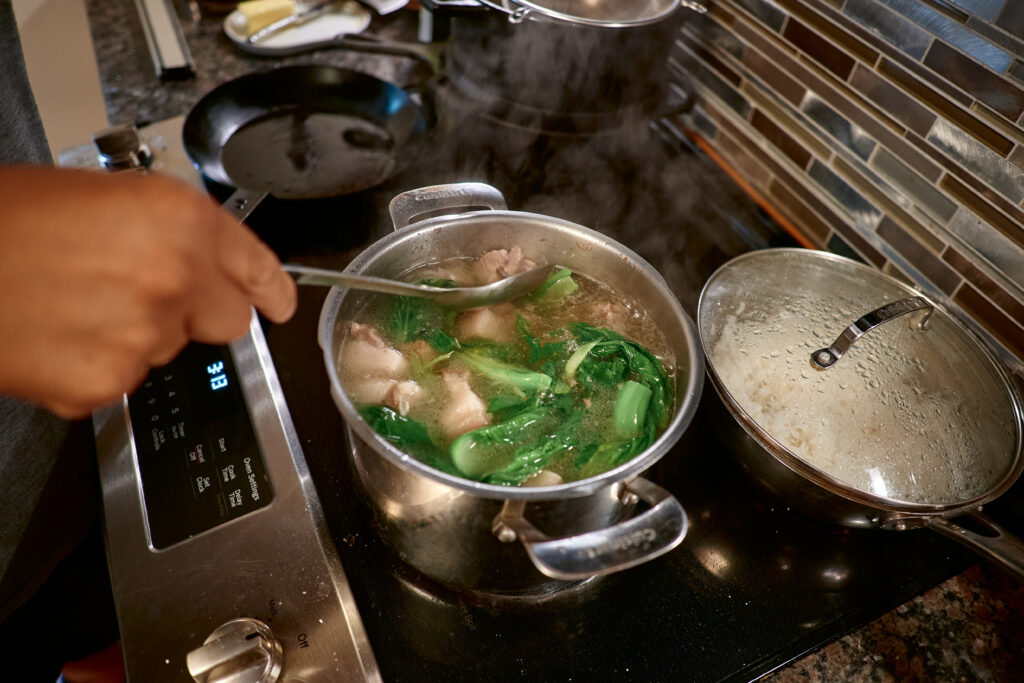
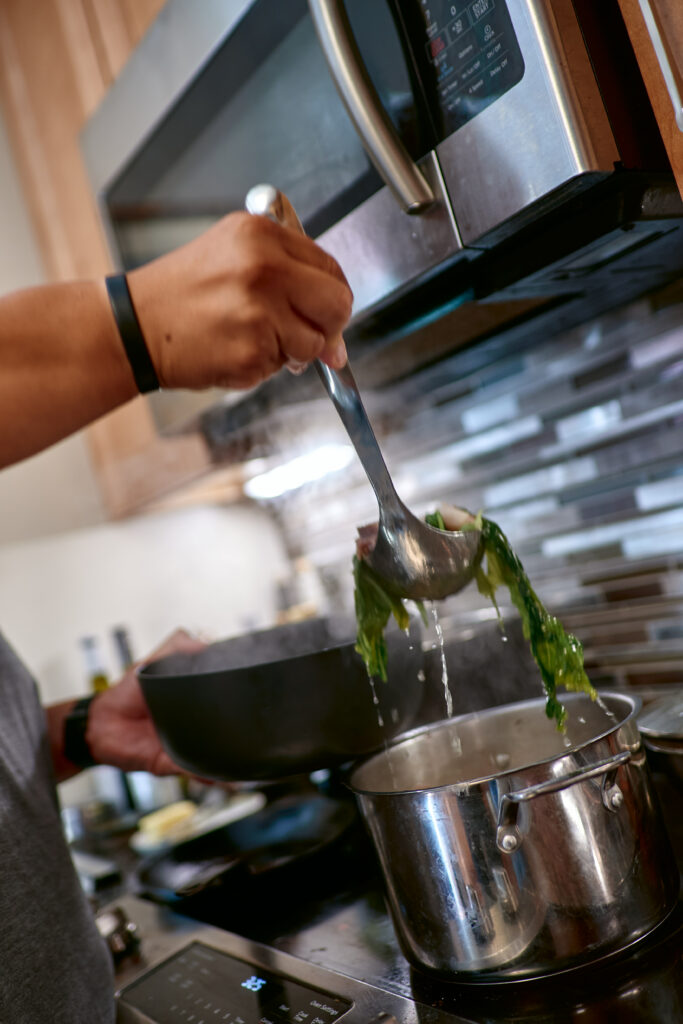
Photo: Uche Iroegbu. 
Photo: Uche Iroegbu. 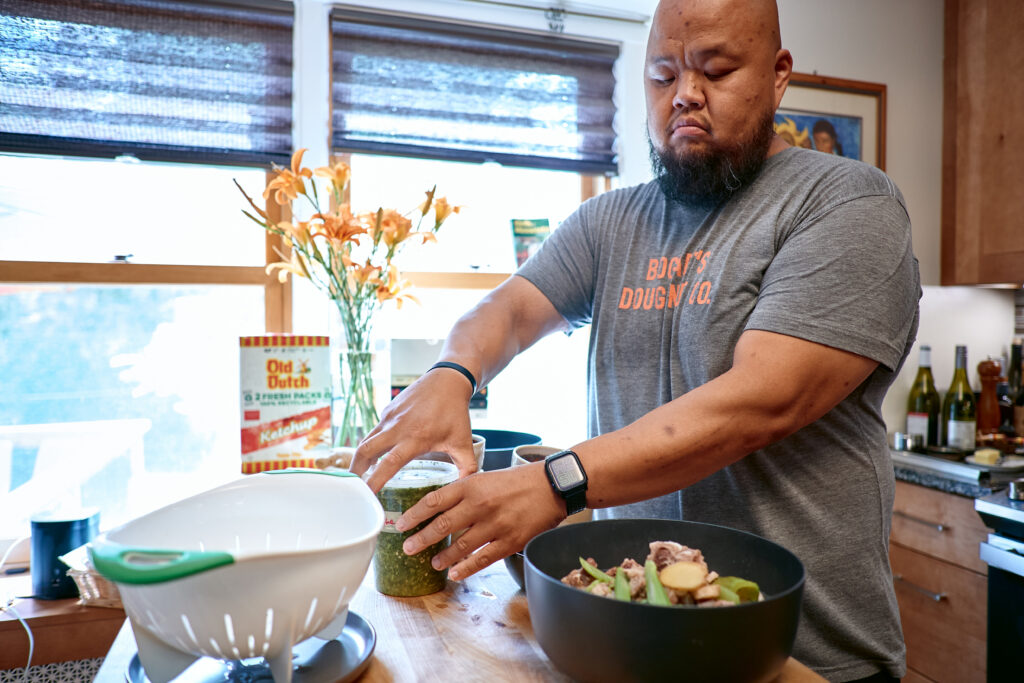
Photo: Uche Iroegbu.
They both hope their work will simply spark curiosity.
“This is a portal for conversation,” Pao explains. “I like it that this might require research. I haven’t even scratched the surface about issues in the Hmong community. This is a window for further dialogue.”
While it’s easy to make a connection over a bowl of nqaj npuas hau nrug zaub ntsuab—“I would be willing to bet that this is the first solid food to touch any Hmong baby’s lips,” Yia says—neither wants to be perceived as a spokesperson or representative for the Hmong community.
“I speak for myself, and maybe my siblings—but even that is a stretch,” says Pao. And yet they make one exception:
Always be thinking of others, and the next generation, first. And when it comes to that, never, ever give up.
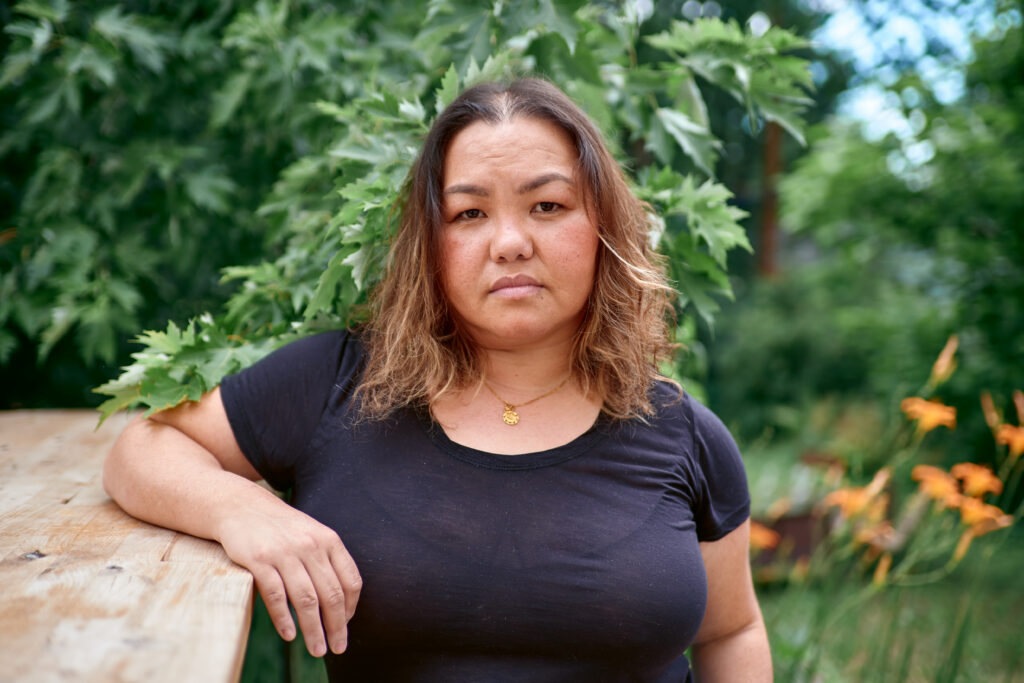
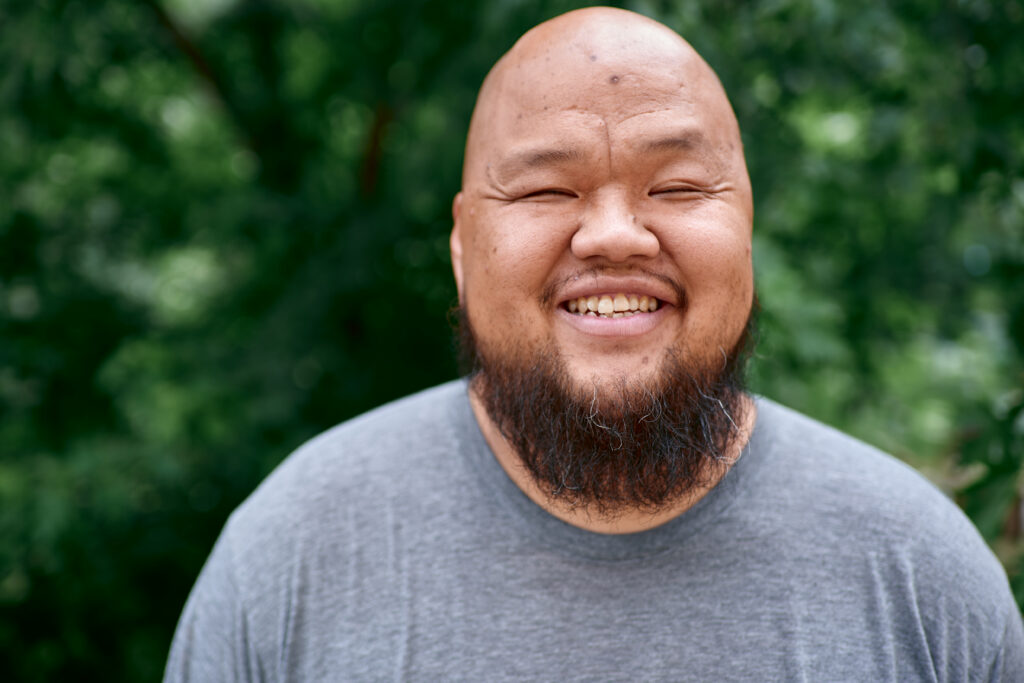
Pao Houa Her’s exhibition Paj qaum ntuj / Flowers of the Sky is on view at the Walker Art Center July 28, 2022–January 22, 2023. >> more information